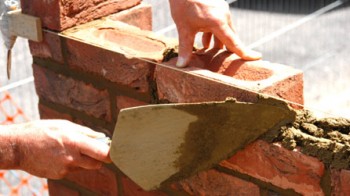
The basic objectives of building energy efficient homes are to make living healthy and comfortable for the residents by efficiently utilizing electrical energy, water and other natural resources, reducing waste, pollution and other harmful effects on environment and bringing down energy costs and costs of other resources.
By making suitable alterations to the home that is designed to improve efficiency in utilization of energy, it is possible to either remove or at least reduce the amount of impure air getting into the home due to several weather conditions. The design of the house and the use of proper building materials are the two important aspects that one should focus in order to make the home energy efficient.
In Australia, 90% of the houses are built utilizing bricks and bricks are the common building materials in that country. In view of vigorous campaign all over the world to reduce energy consumption substantially, recent buildings regulations imposed nowadays stipulate that the new homes constructed should be more energy efficient.
Here are a few factors that one should keep in mind so that well considered decisions can be taken while making alterations to the home to make it more energy efficient. While significant portion of the total energy consumption in a home goes to operate equipments for cooling and heating the home, for cooking and lighting comparatively much less energy is needed.
Any expenditure on home improvements aimed at reducing energy consumption on cooling and heating in one’s home is a good investment. However, it may not be possible to reduce the energy consumption on these two items without compromising the comforts inside the home. It is where the passive design of the home will be very useful.
In passive solar home design, windows, walls and floors absorb solar energy in the form of heat in the winter and discard solar heat in the summer in order to enhance the cooling and heating effect naturally. In contrast to active solar heating systems, there is no need to use electrical or mechanical equipments in passive design.
The four prerequisites to designing passive solar homes are orientation, ventilation, insulation and thermal mass.
Orientation
This includes location of windows and the type of glazing. The large glass window on the northern side enables the low sunshine to enter the house in winter and severe sun in summer is obstructed with the help of shading from extended roof or attic.
Ventilation
After the peak summer is over, air is allowed to pass through the house freely. In order to make the cross ventilation effective, either side of the house should have windows or openings without any obstruction. The free passage of air inside makes the rooms cool and pleasant in a natural way.
Insulation
Insulating the walls and roofs and plugging the gaps in windows and doors is very important to prevent heat radiation raising the inside temperature of the house. The efficiency of insulation is evaluated by means of its R-value. However, it does no as such represent the efficiency as a whole. For example, several walls with the same R-value may not function with the same efficiency.
Thermal Mass
Thermal mass is any material used for construction of the house such as wood, concrete, bricks or even floors that absorbs solar energy and heat from the sun during the day and releases that heat at night. With the help of thermal mass concept, the temperatures in the house during summer can be significantly moderated and the energy costs brought down. In comparison with brick walls, the lightweight material has very low thermal mass and in view of this, brick walls are much effective in moderating temperatures in the house even if they have similar R-values.

The choice of materials such as brick slabs has considerable effect on the amount of thermal mass in a house or a building. The first two principles of ‘passive design’, to be precise, orientation and ventilation, need to be considered while building the house and the choice of materials such as brick slabs has considerable effect on the amount of thermal mass in a house or a building.
Use of bricks is among the easiest and cost-effective methods of providing thermal mass in a house. The bricks made from clay are abundant in thermal mass. The brick walls provide proper ventilation, are energy-efficient and keep the rooms cool and comfortable.
According to various research studies, the brick stone homes are energy-efficient and the external portion of the brick walls ensure that major portion of the heat is deflected back to the outside atmosphere. This has the effect of keeping the home cool and comfortable in summer despite fluctuating temperatures outside. The US Department of Energy has declared that thermal mass accumulates heat by converting its temperature. This is done by storing the heat coming out of a warm room or by converting solar radiation directly into heat.
As brick stones have better thermal mass than lightweight building materials, they are very useful in making a home more energy-efficient. In addition, using bricks in construction is easy and economical.